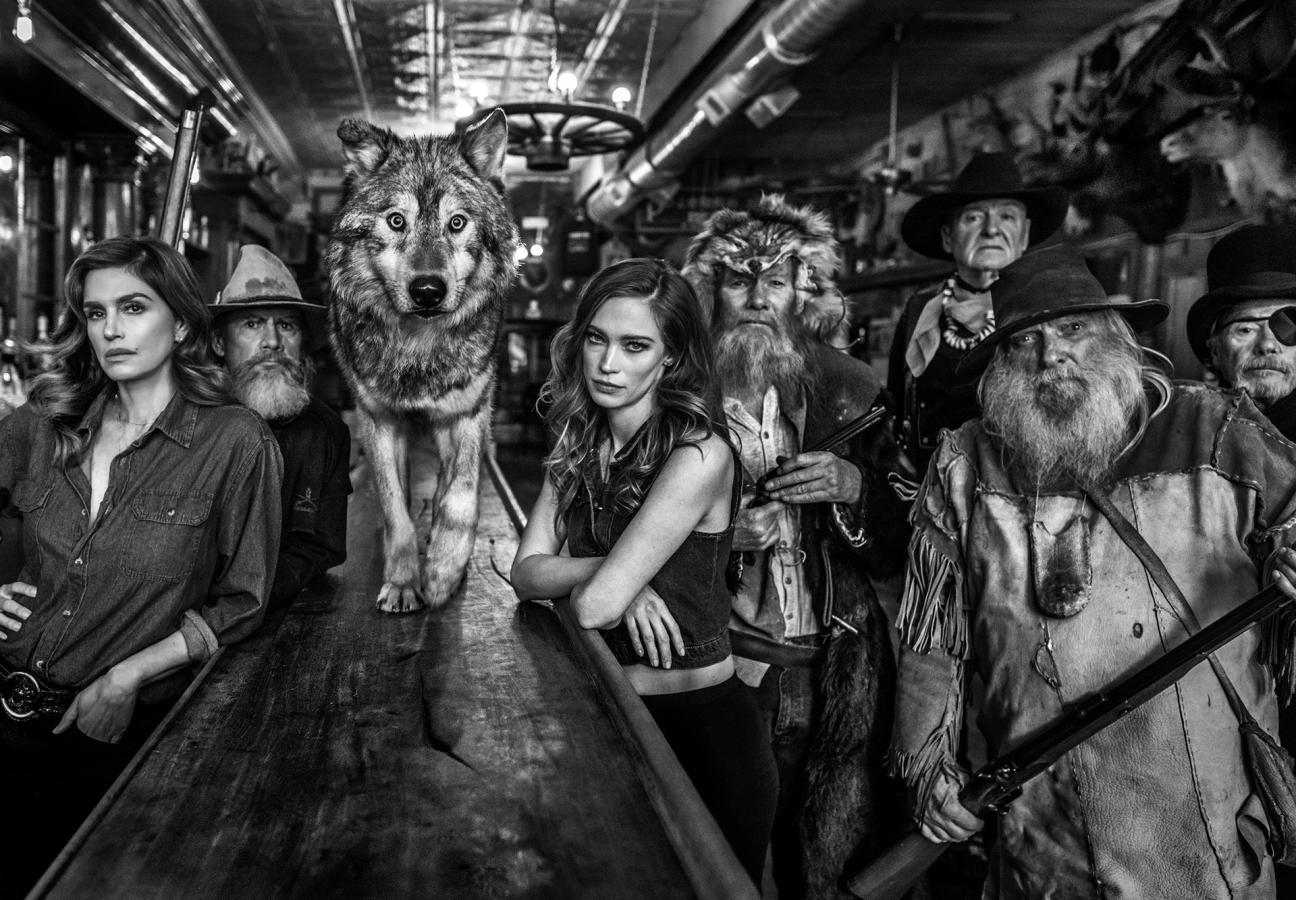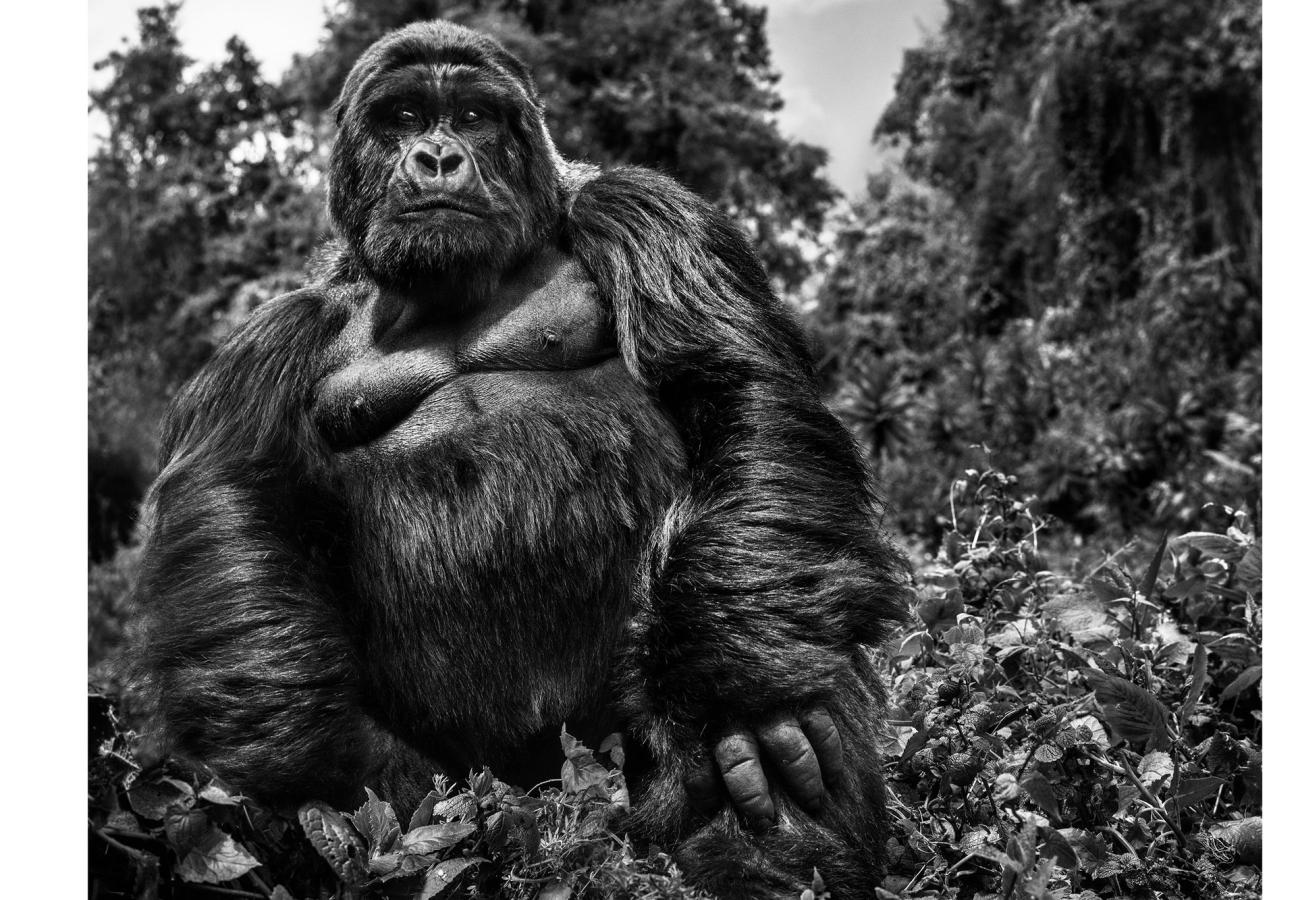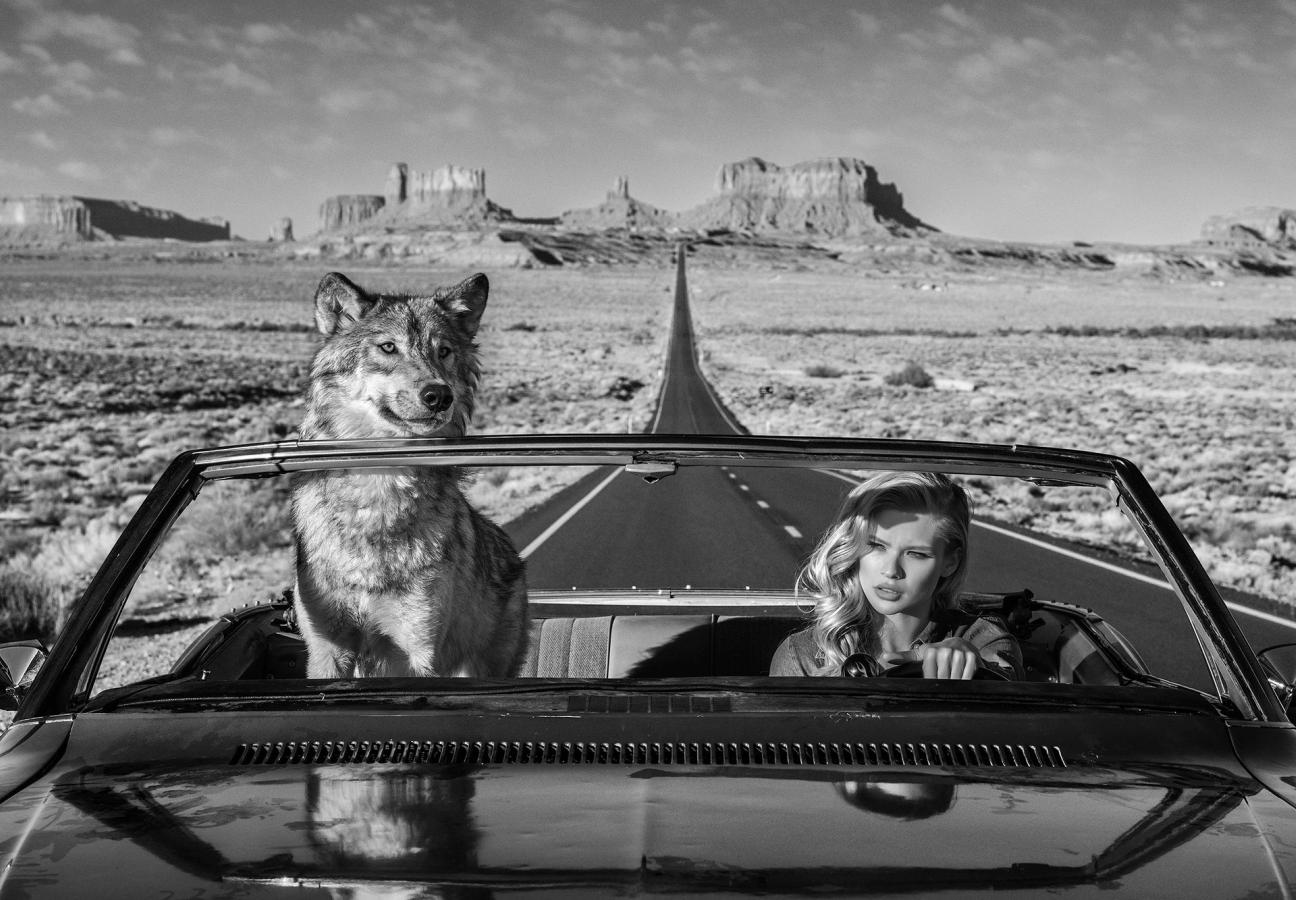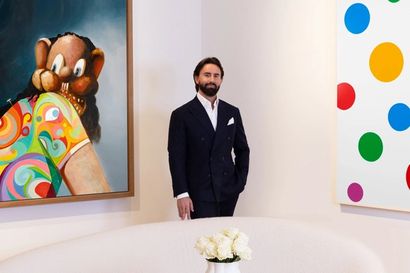Even if you don’t recognise Scottish photographer David Yarrow’s name, you’ll almost certainly recognise his work. Whether its Diego Maradona holding the trophy aloft at the 1966 Mexico World Cup, a portrait of one of the world’s most famous supermodels or one of his show-stopping wildlife images, Yarrow’s are works which leave a lingering impression. To celebrate the release of a new monograph of his work, he takes us behind-the-scenes of his most iconic shoots.
78 Degrees North (Svalbard, Norway, 2017)

I should start by saying that I have generally been disappointed by my own work with polar bears in Svalbard. I haven’t tended to do them or their habitat justice. This is a ‘Giants’ Kingdom’ and my images from previous trips have been too marginal to do either the giants or their kingdom justice.
There is no doubt in my mind that this photograph of a big male polar bear lends weight to the contention that wildlife photography does not need to be reportage – it can be art. The photograph is elevated by the negative space and the bear’s anonymity rather than weakened by it. Since 2011, I have spent over 30 days shooting in Svalbard and this is my favourite image of a polar bear in this part of the Arctic – indeed the more I look at it, the more proud I am. As my fellow Scottish photographer and friend, the great Harry Benson, once said “great images can never be repeated”. Others will decide if this is a great image, but it is certainly not going to be repeated.
The eye is immediately grabbed by the detail we recognise but have perhaps never seen – the distinctive pads on the sole of his foot. The central pad, that resembles the Nike style “swoosh”, is the epicentre of a photograph that owes its differentiating content entirely to this right foot. The image is made complete by its own lack of completeness – the storytelling is started by the camera and finished by the viewer. Less is more in the Arctic – its beauty is in its simplicity and the enormity of the white detail. It is not a noisy place – in fact it is characterised by the lack of noise. This is not a natural human habitat – it is in fact our final frontier.
The Unusual Suspects (Montana, USA, 2019)

I have worked in this room many times before and I know my light, my angles and the minimal depth of focus. When we shot there last year we called a photograph of the mountain men at the bar The Usual Suspects as that is exactly what they were. Some of those men rarely leave the warmth of The Pioneer Bar in Virginia City throughout winter. It proved such a popular image and sold out across the world raising huge sums for charity.
When we went back this year, we thought it would be fun to have an additional crewmember – Cindy Crawford. The word juxtaposition is over used in narrative, but I think we can get away with it here. The old boys may drink and smoke a bit of weed, but they were on their very best behaviour that day. An international icon joining their party was not something they bargained for and at least one cowboy convinced himself it was the weed. We had to call the image The Unusual Suspects as a nod to her presence.
The composition, which I could control, had to be spot on. It is a low percentage game this and we only came away with one shot – but we got it. Cindy looks fantastically glamorous and a little “bad ass” in her role, but, as always, it is the mountain men that take away the Oscars. Roxanna Redfoot did a grand job too.
Judge and Jury (Rwanda, 2019)

Finding a Silverback gorilla high up in the volcanoes in Rwanda, in a position offering a sense of place and a wider narrative, is a tough ask. It’s effectively a numbers game in that the more times you make the trek, the greater the chance an opportunity will arise. Until that day, I had not had a break and my records are proof of that. The rangers and trackers ensure that no trek goes unrewarded but they had always been in dense forest with little or no backdrop.
Some of the guides and the lead ranger knew my frustration at the lack of depth I was finding and suggested a troop, the Umubano Gorilla Family, that was quite far west of the group of volcanoes. I agreed to give it a go but was curious when I was told that I was the only one to be making the trip this day. When we set off from the village of Bisate at 7.30 am, it quickly dawned on me why I was alone – this was going to be one hell of a climb and we were already at 9,000 ft. Normally the wall crossing to the rainforest is about 20 minutes from a drop off point and on this day it took 90 minutes – all uphill. For mountaineers this would be a piece of cake, but I am the first to admit that I am no mountaineer.
Anyhow, it was good for me and when we reached the wall and looked up to the rainforest, I could see why the area had potential – there were plenty of ridges and look out points. It was still dense, but there seemed more room to breathe in places. I left most of my gear with the porters and took just one camera and my trusted 58mm lens. I wanted to roll the dice a little and also be nimble. When we reached the troop, they were on the move and I focused on the lead Silverback. And so it was that I got my moment. The perspective was exactly what I was looking for.
Africa (Amboseli, Kenya, 2018)

I doubt I will ever take a more powerful portrait of either an elephant or East Africa. That’s the thing about this work; it’s a collision of two enormous features – one volcanic, one iconic and they complement each other and raise the bar higher still. It’s a timeless piece and closer to perfection than anything I can remember in my career. The contextual narrative behind Tim (the elephant) is East Africa at its symbolic best.
The irony is that three hours prior to this, I was sitting back at our base somewhat grumpy that for once the location was not delivering. But at 2.20pm, we received news that our scouts had located Tim in the open, 90 minutes away and there was a chance to do what I had always wanted to do. We grabbed our gear and made haste.
When we arrived the sun was still too high and we had to bide our time and keep our distance from Tim. I wanted a fresh charge not a tired one and that meant waiting and playing smart. We had to keep him at a distance, but equally keep him in our sights. It was a tactical hour ahead and there were many people to thank for keeping their discipline and encouraging me to keep mine., The greatest credit for this piece of art should go, not to me, but to Juma Wanyama, my guide in Amboseli. He found the scouts that tracked Tim, but more importantly, he knows both this elephant and me equally well and he allowed me to put myself potentially in harm’s way. Had our relationship been nascent, there is no way this picture could have been captured, because at its heart there is a triangular trust between three mammals. I have had to earn that with Juma and Juma has certainly had to earn it with Tim.
Road Trip (Utah, USA, 2018)

I have always been drawn to the John Ford scenery of northern Arizona and Utah, the highlight of which has to be Monument Valley. I am clearly not alone in considering the view south from turnoff 13 on the way to Mexican Hat to be one of the most visually intoxicating sights in the US. It was, of course, used in Forrest Gump and then provided the front cover to Ridley Scott’s Thelma and Louise. The US has taken ownership of the term ‘road trip’ as explained succinctly by this stretch of tarmac. It’s truly an iconic and timeless vista that shouts “The Wild West”.
Thelma and Louise is rightly one of the most lauded road trip movies of all time. About a month ago, I picked up the DVD box and had a moment of inspiration. The use of the convertible car and the head on angle offered a totally different perspective on Monument Valley.
We arrived on site two days before the shoot as we wanted to be in control of everything possible. I can’t remember ever pondering more over camera settings and lenses. I knew I would have a generous amount of light to play with at 7.40am and we had to use it well. The big variable was the wolf’s behaviour – the light gets too harsh from about 8am and therefore there was only a small window to get the job wrapped. It was tight, but we did it. All in all, it was a great team effort in a fairly remote part of the American West.
Cara Cigar (South Africa, 2018)

When a known photographer leaves this world, there is never the time or the space to remember too much of his or her work. There tends to be just three or four iconic images that transcend the overall body of work. They define a career.
I am not sure where my career will take me and I am not sure whether I have taken an iconic image yet – I will let others decide. But I do know that this photograph, which is part of the TAG Heuer Don’t Crack Under Pressure campaign is probably one of the most powerful shots I have ever taken. Yes, it was a commercial shoot with one of the world’s most famous women, but I think it goes beyond that and will be coveted by collectors. It grabs the eye and it in a vice-like grip. Everything about the work is viscerally powerful.
I look back on that day with great emotion and there are so many people to thank. None more so than Cara Delevingne. She is, of course, stunning, but she is also authentic and intelligent and couples this with admirable work ethic. Furthermore, on this day, she was incredibly brave and fittingly did not “crack under pressure”. This image is not manipulated – there was five yards between her and the lion. At no stage did she show tension or anxiety and that made my job so much easier.
Key to the image was the reasonably powerful late afternoon sunlight, as the shadows on both Cara and the lion are so consistent that the authenticity of the image can’t be questioned. In the morning, the light was flatter and therefore the lion and Cara were not as visually linked as they are here.
David Yarrow’s new monograph, showcasing 150 of his strongest images from the past two years, is out now.
Want more from the art world? We spoke to Yinka Ilori about creating artworks using artificial intelligence…

Become a Gentleman’s Journal Member?
Like the Gentleman’s Journal? Why not join the Clubhouse, a special kind of private club where members receive offers and experiences from hand-picked, premium brands. You will also receive invites to exclusive events, the quarterly print magazine delivered directly to your door and your own membership card.


